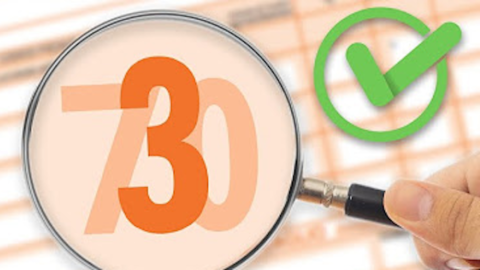June 16th is the deadline for paying the deposit and before then almost half of Italy will have to ask itself two problems: how is the 2015 IMU calculated? And how do you pay? These are questions that need to be answered by around 25 million taxpayers who own properties other than main residences (including agricultural land), in addition to the owners of 70 luxury main homes (those that fall under cadastral categories A/1, A/8 and A/9, on which, however, the levy is reduced).
1. HOW IT IS CALCULATED
A) Rates and deductions
For the advance payment of the IMU (like that of the Tasi) the rates and deductions of 2014 still apply. This means that, if the real estate assets have not undergone changes compared to last year (and if neither the category cadastral nor the method of use of the properties), the calculation of the amount to be paid is very easy: just divide by two the total amount paid for the tax in 2014.
In the event that this year the Municipality changes rates or deductions compared to 2014 (there is time until 28 October to publish the data on the Treasury website), the new parameters will have to be used to pay the balance (deadline 16 December) , which will include any adjustment on the deposit. In any case, "nothing prevents that, in the event that the Municipality has already resolved on the subject of Imu and Tasi rates and deductions, perhaps resulting in more favorable conditions than in 2014 - writes the Ifel Foundation (Institute for Finance and the Economy local) -, the taxpayer can refer to the resolutions relating to this year also for the payment of the advance”.
For the Imu, the basic rate is equal to 7,6 per thousand, but the Municipalities can reduce it up to 4,6 per thousand or raise it up to 10,6 per thousand. It is also possible to introduce a surtax of 0,8 per thousand which pushes the maximum limit of the rate up to 11,4 per thousand.
The main residences subject to the Imu (stately homes or homes of significant value) are entitled to a deduction of 200 euros.
This year, "a tax deduction of 200 euros is also recognized - continues the Ifel Foundation - to direct farmers and professional agricultural entrepreneurs, enrolled in the agricultural social security, who own land in hillside municipalities and who are not included in the list prepared by the 'Istat. The owners of these properties are entitled to an Imu deduction up to the amount of the tax due”.
[Search for the 2014 rates and deductions of your Municipality on the website of the Ministry of Economy]
B) The tax base
The taxable base (the value to which the rate is applied to then subtract any deduction, thus obtaining the final amount to be paid) is the same as the Tasi and to calculate it two steps are required: first the cadastral income is revalued by 5% , then multiply the result by the correct coefficient. Here's the list:
– 160 for buildings classified in the cadastral group A, with the exclusion of the cadastral category A/10 and in the cadastral categories C/2, C/6 and C/7;
– 140 for buildings classified in cadastral group B, and in categories C/3, C/4 and C/5 (craft workshops, gyms (non-profit), bathing establishments);
– 80 for buildings classified in category D/5 (credit institutions, exchange, insurance);
– 80 for buildings classified in the cadastral category A/10 (offices and private studios);
– 65 for buildings classified in cadastral group D (sheds, hotels, cinemas, etc.), with the exception of properties classified in category D/5, for which, as mentioned, the multiplier is 80;
– 55 for buildings classified in category C/1 (shops).
The tax base is reduced by 50% for buildings of historical or artistic interest and for those declared unusable or uninhabitable by a municipal technician. For agricultural land, on the other hand, the figure is calculated by revaluing the landlord income by 25% and multiplying the result thus obtained by 135. Lastly, for building areas, the tax base is given by the building value.
C) Special cases
I. Without prejudice to the adjustment in the event of modification of the rates and deductions, the down payment and the balance should, in theory, be of the same amount. Therefore, if I bought a property in February, to calculate the down payment I won't have to take into consideration only the months from February to June, but the entire period February-December, then dividing the result by two.
II. As for the appurtenances of the main house [warehouses and storage rooms (cadastral category C/2), garage, sheds, stables and stables (C/6), closed or open sheds (C/7)], it is exempt from Imu only one real estate unit for each category: if you have two boxes, for example, the tax must be paid on one of the two.
III. The Imu is due in proportion to the share owned (it must be paid independently by each co-owner) and to the months of the year in which the possession lasted (considering in full the month in which the possession lasted for at least fifteen days) .
IV. Contrary to what happens for the Tasi, rented tenants are not required to pay any IMU payment: the tax falls entirely on the landlord.
V. In addition to main (non-luxury) homes, the IMU is not due on a number of other properties: those of housing cooperatives with undivided ownership used as the main residence by the assignee members; social housing; the only (non-leased) property owned by military or law enforcement personnel; the marital home entrusted to the ex-spouse in the event of legal separation or divorce; agricultural lands, even if not cultivated, which are located in the Municipalities classified as totally mountainous and in those of the smaller islands; agricultural land, even uncultivated, owned and managed by direct farmers and professional agricultural entrepreneurs in the Municipalities classified as partially mountainous as per the same Istat list.
2. HOW TO PAY
There are two options for paying the Imu (like the Tasi): the postal order and the model F24 (which also allows you to pay online through your bank and settle your bill with other tax credits).
A) Postal
In post offices you can find partially pre-compiled slips to which you need to add your personal data and information on the property for which you pay the tax.
B) Model F24: example of Imu compilation
The section to be used is "IMU AND OTHER LOCAL TAXES". Let's see what to write in the individual fields.
- Institution code/municipality code. The Table of Cadastral Codes of all Italian Municipalities (for example, Roma – H501, Milano – F205, Naples – F839, Turin – L219, Florence – D612, Genoa D969, Venice – L736, Palermo – G273).
- Rev. Tick this box only if you are paying for a correction, the institution that allows you to regularize omitted or insufficient tax payments.
- Image var. Cross out if one or more properties have been modified and you are required to submit the declaration of variation.
- Accor. The payment to be made by 16 June is the down payment, therefore you must tick this box.
- Sale. Leave this box empty: it will be ticked for the payment of the balance, to be made by 16 December (with possible balance).
- Property no. Indicate the number of properties for which the IMU is paid.
- Tax code. The scheme for the IMU is as follows:
– for the main house and related appurtenances 3912;
– for rural buildings for instrumental use 3913;
– for land (Municipality) 3914;
– for land (State) 3915;
– for building areas (Municipality) 3916;
– for building areas (State) 3917;
– for other buildings (Municipality) 3918;
– for other buildings (State) 3919;
– for interest from assessment (Municipality) 3923;
– for assessment sanctions (Municipality) 3924;
– for buildings for productive use classified in cadastral group D (State) 3925;
– for buildings for productive use classified in cadastral group D (municipality increase) 3930.
- Installments/month ref. Do not fill out.
- Reference year. Write the tax year for which the payment is being made. The Imu and Tasi are normally paid for the current year.
- Debt amounts paid. Write the amount to pay.
- Offset credit amounts. Indicate any offsets with other tax credits.
- TOTAL G. Sum of the payable amounts indicated in the IMU and Other Local Taxes section.
- TOTAL H. Sum of the credit amounts indicated in the IMU and Other Local Taxes section (do not fill in if there are no credit amounts).
- BALANCE (GH). Indicate the balance between TOTAL G and TOTAL H.
- Deduction. Specify any deduction.





